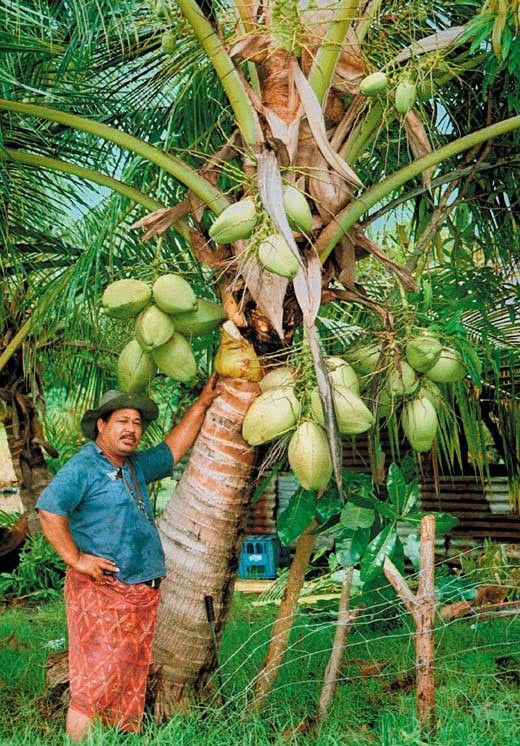Good morning my fellow family and friends, this is Dannicom once again in your way with an update about varieties of coconut.
A coconut is the edible fruit of the coconut palm (Cocos nucifera), a tree of the palm family. Coconut flesh is high in fat and can be dried or eaten fresh or processed into coconut milk or coconut oil. The liquid of the nut, known as coconut water, is used in beverages.
VARIETIES
Coconut palms can be classified according to the size and stature of the palm, and are referred to as Tall (15–18 meters) and Dwarfs (5–7 meters). The fruit produced by each is about the same size. The difference in the name is to say at what height they produce their harvestable coconuts.
TALL COCONUT PALMS
Tall coconut palms are usually cross-pollinated, and are subjected to the most variations. They are classified by the location where they are grown, assuming that some uniformity in the population is developed in one location across several generations, adapting to drought, high rainfall, alkaline soil or resistance to various insects and diseases long established in the specific location. This is why they are sometimes classified as West African Tall, Malayan Tall and such.
Tall coconut palms have longer economic lives than Dwarf trees, typically about 60-80 years, and can live up to 100 years old under favourable conditions. They also have larger fronds than Dwarf trees, so fewer Tall coconut trees can be planted per hectare of land. Tall coconut palms are also fairly resistant to diseases and pests, except some virus diseases, and thrive under different soil conditions. After six to eight years of planting, Tall coconut palms will begin to bear fruits.
DWARF COCONUT PALMS

Although Tall coconut trees are usually the choice for commercial planting, Dwarf varieties can be found in The Philippines, Malaysia and Indonesia where there is greater control over soil conditions, and the smaller stature allows for higher density planting.
Dwarf coconut palms (5–7 meters) are mostly self-pollinated, and have fewer variations compared to Tall varieties. They are classified by the colour of the coconut fruits produced. As the name suggests, Dwarf coconut palms are smaller in stature than Tall varieties.
Dwarf coconut palms have shorter economic lives than Tall palms and only live up to 60 years old. With smaller fronds, more Dwarf coconut trees can be planted per hectare of land. Compared to Tall coconut trees, Dwarf varieties cannot adapt as well to different soil conditions, and are more susceptible to diseases, although they do show good resistance to some virus diseases. However, they begin to bear fruits earlier, after only three years of planting. At about 10 years old, they come into regular fruiting. Similar to Tall varieties, the bigger the coconuts, the lesser number of fruits found per bunch.




